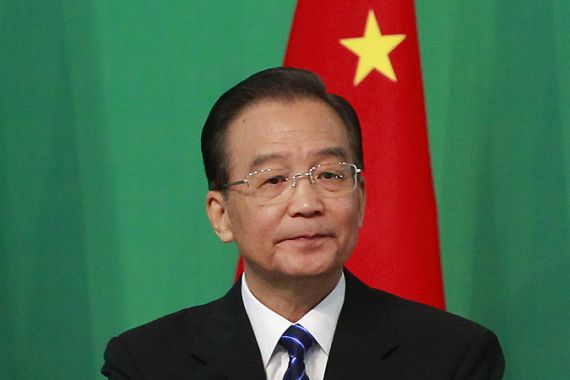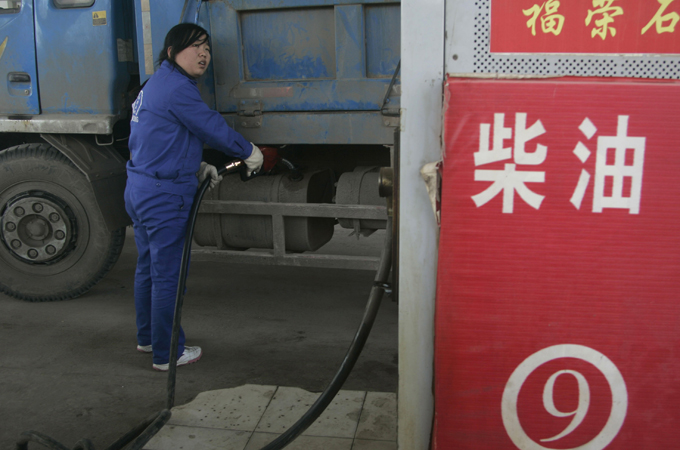Chinese inflation at 28-month high
Fears of interest rate hikes as consumer prices rise 5.1 per cent year-on-year in November, above market expectations.

 |
| While food costs remain the most significant driver of inflation, non-food costs have also been rising [Reuters] |
China’s government has said that inflation has exceeded five per cent for the first time in more than two years, a figure analysts said was likely to lead to fresh interest rate hikes to curb rising prices.
The country’s consumer price index rose a faster-than-expected 5.1 per cent year-on-year in November, as food costs continued to soar, compared with 4.4 per cent in October, the National Bureau of Statistics (NBS) said.
Keep reading
list of 4 itemsWhy are nations racing to buy weapons?
Parallel economy: How Russia is defying the West’s boycott
US House approves aid package worth billions for Ukraine, Israel
It was the fastest increase in consumer prices since July 2008, when inflation hit 6.3 per cent, and is well above the government’s target of three per cent for 2010.
Analysts had forecast inflation would be 4.7 per cent this year, according to Dow Jones Newswires.
“Price rises in November are beyond many people’s expectations indeed,” Sheng Laiyun, an NBS spokesman, said.
“It will take some time for the [anti-inflationary] policies to be implemented and show clear effects.”
Planning ahead
Ever fearful of inflation’s historical potential to spark unrest in China, Beijing has ordered a range of steps to boost supplies of key goods after severe summer flooding and recent cold snaps hit yields and drove up prices.
As part of these efforts, the central bank announced in October the country’s first interest rate rise in nearly three years.
On Friday, the central bank ordered lenders for the sixth time this year to keep more money in reserve as authorities struggle to stem the flood of liquidity into the economy, which is fanning the inflation problem.
Brian Jackson, a Royal Bank of Canada analyst, said the inflation figure showed China needed to “bring out the big guns,” in pursuing an aggressively anti-inflationary policy.
He predicted Beijing would raise benchmark rates by 25 basis points before the end of the year, with rates rising a further 75 basis points over the next year.
While food costs remained the major driver of inflation last month, up 11.7 per cent on the year, non-food prices also gathered pace, rising 1.9 per cent year-on-year compared with October’s 1.6 per cent increase.
“It is slightly alarming that there is price pressure outside of food,” Tom Orlik, a Beijing-based analyst with Stone & McCarthy Research Associates, said.
“I don’t think we are going to see rampant inflation but I think 5.1 per cent is certainly enough to have the government accelerate its efforts to contain the problem.”
‘Prudent’ 2011 policy
There had been mounting speculation that an interest rate rise or tighter lending restrictions were imminent after Beijing pledged last week to shift its monetary policy stance in 2011 to “prudent” from “relatively loose”.
However, analysts have said November could mark the peak for inflation, citing official figures that show food costs eased in recent weeks after the prices of key vegetables soared more than 60 per cent in early November.
The National Development and Reform Commission, China’s economic planning agency, said in a statement it expected CPI growth to slow to less than five per cent as moves to control grain, vegetable and cooking oil prices take effect.
Economists have blamed rampant lending last year and the government’s $586bn stimulus package, unveiled in late 2008 in the wake of the global financial crisis, for driving up prices.
Economic indicators
Other key data shows industrial output from China’s factories rose 13.3 per cent year-on-year in November, up from 13.1 per cent in October, even as Beijing closed highly polluting operators and rationed power to energy-intensive industries.
Factories have been getting around the power restrictions by using diesel generators to keep assembly lines churning out goods, leading to a nationwide shortage of the fuel.
Fixed asset investment in urban areas, a measure of government spending on infrastructure, rose 24.9 per cent over the January to November period, slightly faster than the 24.4 per cent over the first 10 months of the year.
Retail sales, a key measure of consumer spending, jumped 18.7 per cent year-on-year compared with 18.6 per cent in October.